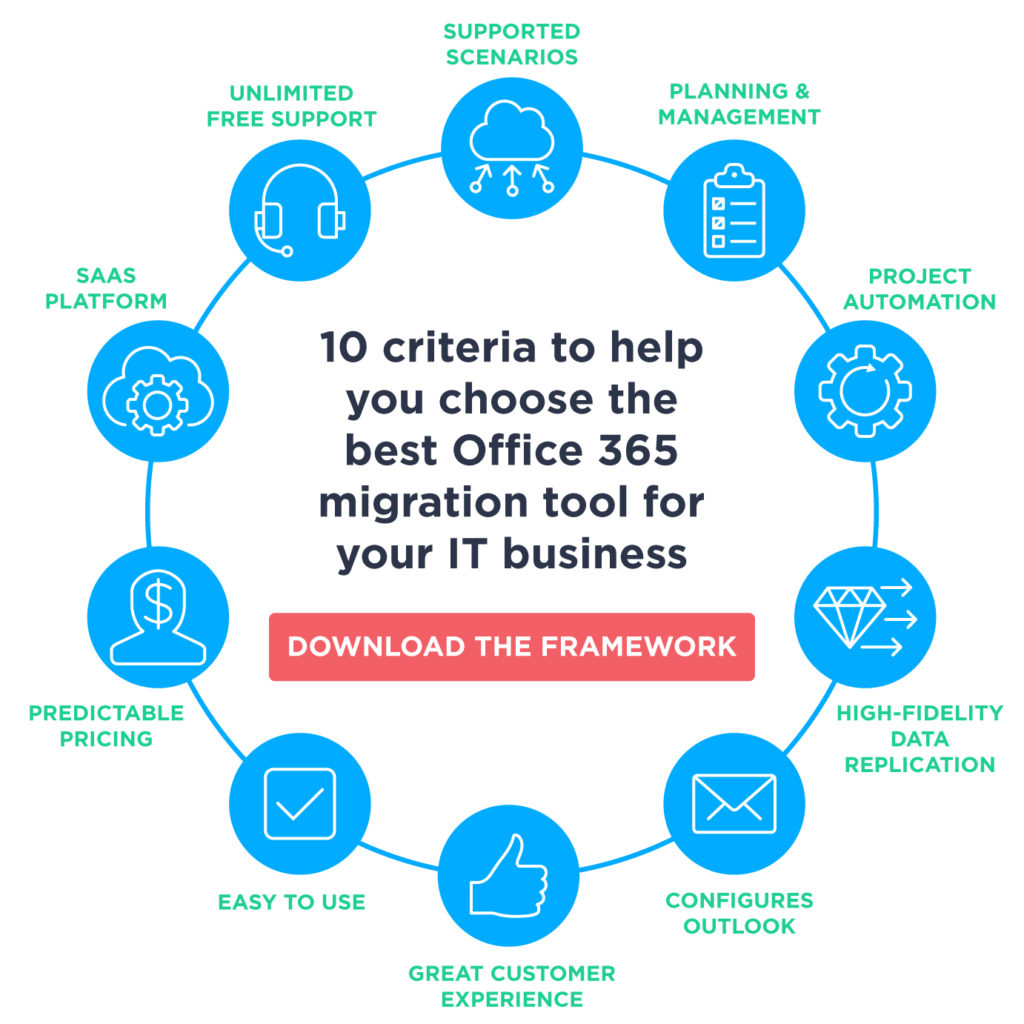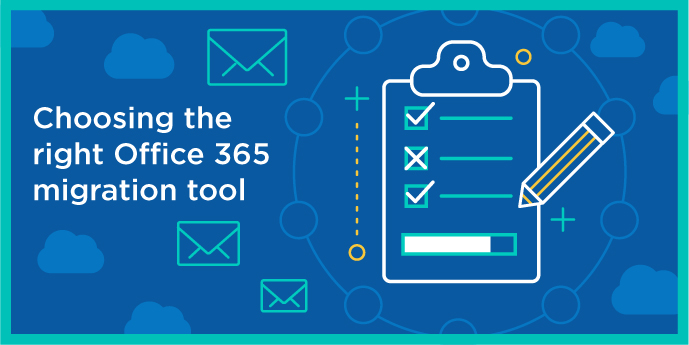Strategies for finding the best tool to bring automation into your cloud migration business
Whether you’re new to the Office 365 email migrations space or a migrations ninja – every project (and client) presents unique goals, workflows, and challenges to consider. Add in the laborious processes that come with manual migrations, and it can be more time consuming than expected. That’s why most MSPs turn to third-party tools like SkyKick’s Migration Suites that automate significant parts of the migration workload, streamline the migration process, deliver a great customer experience, and increase profitability.
Like Wade Walker, Big Green IT’s Manager of Cloud Services, many MSPs attempt to complete email migrations manually at first. “We realized this was not the most efficient use of our time. To shorten the migration timeline and provide a better experience to our clients, we decided to use a migration tool.”
But, depending on what (and how) you plan to migrate your customers to Office 365, finding the right tool (and vendor) for your practice can be difficult. However, delivering a great migrations experience can have big pay offs – unlocking customers for a lifetime of cloud services – so it’s important to find the tool that will empower you to provide the most seamless process for your customers. Based on what we’ve learned from our own MSP community, here are some best practices for selecting the best Office 365 email migration tool to standardize on for your business.
5 key steps to evaluate top Office 365 migration tools
1. Strategic planning – get the scoop on the project scope
To find the right tool for the job, you’ll want to make sure you have a clear picture of the major migration projects your business is supporting and what they will require. Get ahead by checking in with your sales team about upcoming migrations projects before they are underway so you know what your business will need from a migrations tool today and in the future. It’s also a great way to initiate strategic pre-sales conversations and drive alignment with internal and external stakeholders early in the planning process. This can help your business maximize its effectiveness and efficiency through better coordination of timelines, managing expectations and allocation of resources. Understanding what success looks like from your clients’ perspective will also help you identify the tool (and platform) that delivers the best experience for their needs and expectations.
2. Complete a thorough assessment of the tools you’re interested in
Begin by identifying migration tools or products that have the highest competencies, capabilities and benefits for your specific needs. We’ve created this framework to help you get started in your evaluation process. It provides the top 10 things you’ll want to focus on first. 
Of course, there’s lots of criteria to consider – so another way that we find partners evaluate tools is on these three primary dimensions:
- technical completeness and data quality
- user experience and support
- project automation and efficiency.
To see how they shape the tool preferences of other MSPs in greater detail, check out this white paper.
3. Vet your topic choices with research and peer feedback
Once you’ve completed an assessment, you’ll want to collect a bit more evidence to validate the tool. We recommend reaching out to your top vendor choice(s) to collect additional proof and information about how others are using the tool or platform that lead to success. Case studies and references are common ways to get examples and information from other MSPs.
It can also be helpful to reach out to your own professional network for input – especially peers who have experienced successfully standardizing their business on a third-party email migration tool.
4. Test it out
You may feel more comfortable in your selection if you are able to take the tool for a test drive. Just make sure you’re able to test it on a real project before you are charged, so you can get an accurate idea of how well it works for your project and your business. After all, time is money – and errors are expensive!
Start small so you can quickly test the tool with a low amount of risk. This approach also enables you to make quick modifications if needed. Some companies, like SkyKick, offer a way for Microsoft Partners to demo the software or migrate their own business to Office 365 for free if they don’t have a client project they’d like to start with.
5. Get ahead of training and onboarding
Once you feel confident in your choice of tool – ensure you (and your team) have ample time to review the documentation and onboarding resources to help everyone get up to speed fast. Look for vendors that provide comprehensive documentation and technical expertise within their support teams to help you scope and plan your first few projects. SkyKick partners find that access to great resources and experienced migrations support help them better scale their business and deliver exceptional results.
See How SkyKick Measures Up
Want to see how SkyKick measures up? Register for our Demo Day webinar on June 13th to get a quick overview of how SkyKick’s industry-leading email migration solution can help your business.
“MSPs are leveraging migration tools like Microsoft and BitTitan, but none are viewed as driving more profitability than SkyKick.”
– Scharon Harding, Channelnomics


